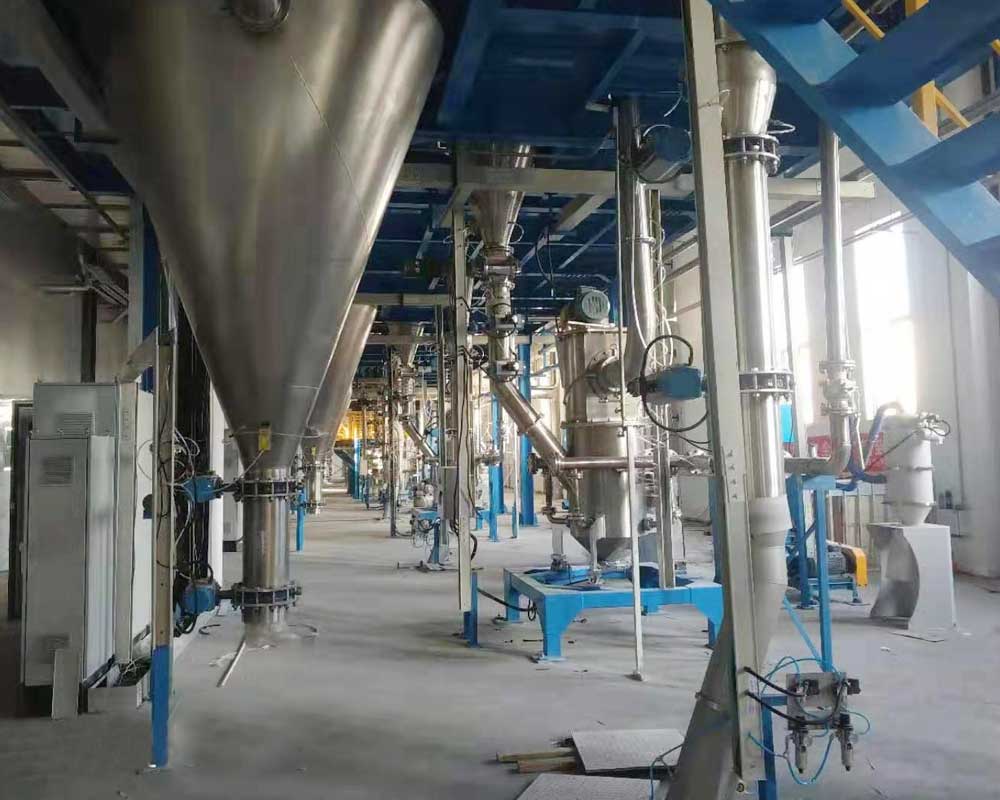Application of graphene after airflow classification in many fields
Graphene is a hot product nowadays. Graphene is a revolutionary material, and its application continues to expand with the deepening of related research. The good properties of graphene also determine that it has an extraordinary market value.

1. The characteristics of graphene
Graphene has good strength, flexibility, electrical conductivity, thermal conductivity and other properties. It is the material with the highest thermal conductivity so far and has very good thermal conductivity, so it is widely used in the new heating industry.
Like the conventional heating film, graphene needs to be energized to generate heat. When the electrodes at both ends of the graphene heating film are energized, the carbon molecules in the heating film generate phonons, ions and electrons in the resistance, and the generated carbon molecular groups interact with each other. Friction and collision (also known as Brownian motion) generate heat energy, and the heat energy is radiated uniformly in a planar manner by controlling the far infrared rays.
After the graphene is energized, the total conversion rate of effective electrothermal energy is more than 99%, and the special superconductivity is added to ensure the stability of the heating performance. However, it is different from the conventional metal wire heating film in that the heating is stable and safe, and the emitted infrared rays are called “light of life”.
2. What aspects of graphene is used after being classified by the airflow classifier

- Flexible graphene transistor
The graphene transistor is a single-electron nanodevice. This kind of transistor has received great attention from the market since its research and development. At present, some flexible graphene transistors have been applied. The main advantage of graphene transistors is that they are easy to operate at room temperature, while having the characteristics of low voltage and high sensitivity. These characteristics make graphene transistors superior to silicon transistors, and at the same time promote the development of microchip technology. In addition, due to the inherent characteristics of graphene, this transistor has extremely high flexibility and foldability.
- Graphene sensor
A sensor is a device that senses changes in the surrounding environment (such as heat, motion, light, pressure, humidity, etc.) and provides feedback through output signals (usually light, mechanical or electrical signals). Because graphene has a large surface-to-volume ratio, unique optical properties, excellent electrical conductivity, high carrier mobility and density, and high thermal conductivity, graphene can be used as a sensor in different fields, including biosensors , Diagnostic technology, field effect transistors, DNA sensors and gas sensors.
- Graphene for lithium batteries
With the wide application of lithium batteries, the types of lithium batteries are constantly enriched. Lithium-ion batteries are considered to be one of the promising electrochemical energy storage systems, with strong application potential in the fields of civil, national defense, and aerospace. However, at this stage, lithium batteries still have certain limitations. Graphene can be integrated into the positive and negative electrodes of different battery frames to enhance battery performance and increase the charge-discharge cycle rate.
- Graphene transparent conductor
Transparent conductors are the core part of devices that require high surface resistance and high transparency, such as touch screens, light-emitting diodes, and solar cells. When used as an electrode, the device must meet the conditions of light input/output. Traditional transparent conductors are composed of highly doped semiconductor oxides, and composite materials composed of graphene, silicon, metal and carbon nanotubes can be used as transparent conductor films. Among them, the transparency of graphene-silicon film is as high as 94%, and the conductivity is 0.45S/cm. This type of composite material has excellent overall performance as a transparent conductor.
- Graphene structure composite material
Graphene and different materials form composite materials, which are used in various applications, such as aviation. Studies have shown that adding graphene to the material can greatly improve the performance of the material. For the aviation industry, a lightweight composite material can save fuel costs. Graphene-based composite materials have great potential and can be used as an important choice for the development of new materials.
- Graphene catalyst carrier
Graphene and its derivatives have rich surface properties, sheet-like morphology, high surface area and high electron mobility. Studies have proved that it is a very effective catalytic material. Graphene is a chemically inert substance. Adding functional groups can change the characteristics of graphene and is suitable as a catalytic carrier.
After being classified by the air classifier, accurate and efficient powder can be obtained, and the particle size is concentrated, so that the high-precision graphene powder can be widely used in many fields.
